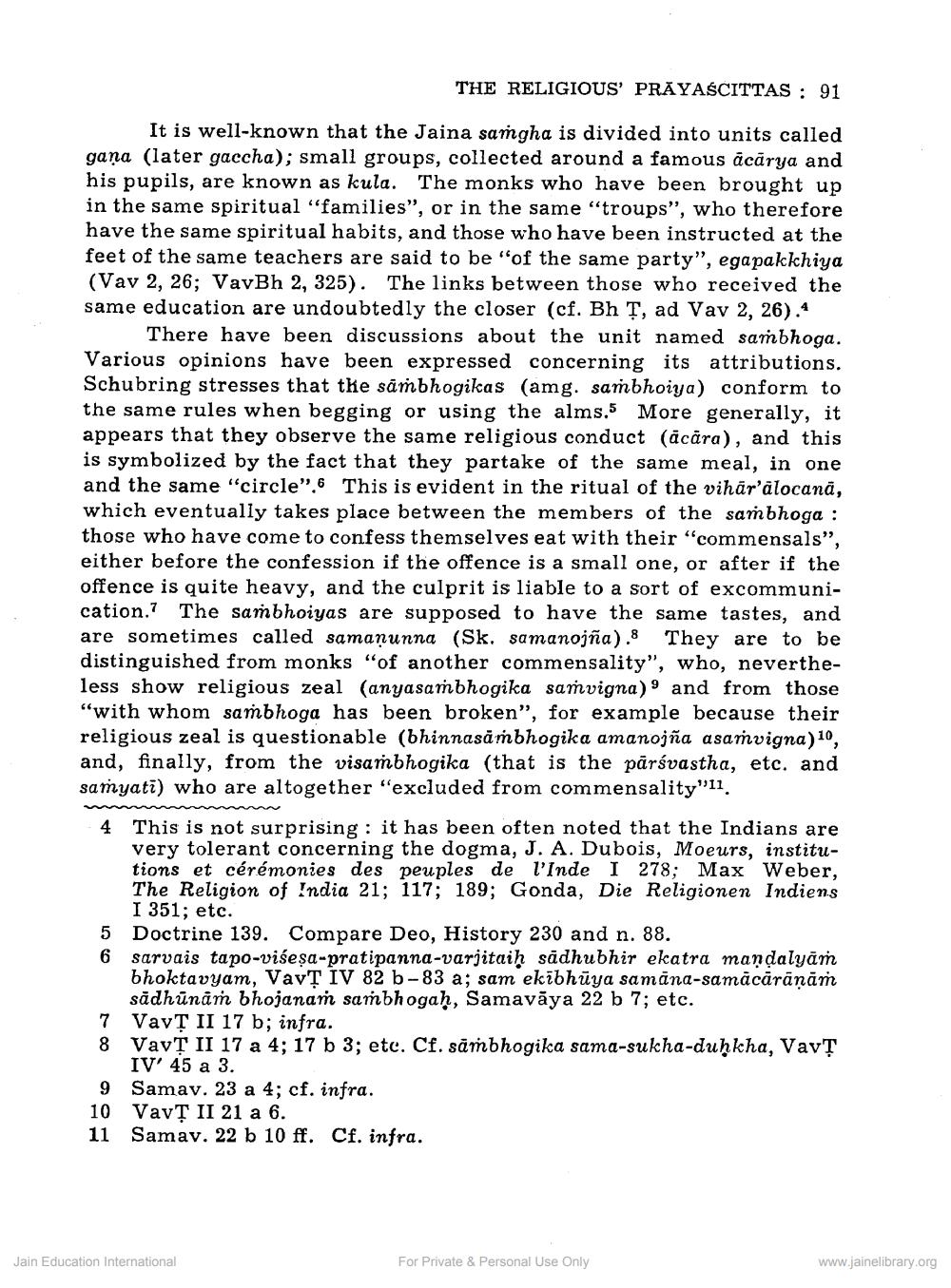Book Title: Religious Prayascittas according to old Jaina Ritual Author(s): Collete Caillat Publisher: Z_Mahavir_Jain_Vidyalay_Suvarna_Mahotsav_Granth_Part_1_012002.pdf and Mahavir_Jain_Vidyalay_Suvarna_ View full book textPage 4
________________ THE RELIGIOUS' PRĂYAŚCITTAS : 91 TL It is well-known that the Jaina samgha is divided into units called gana (later gaccha); small groups, collected around a famous acārya and his pupils, are known as kula. The monks who have been brought up in the same spiritual "families”, or in the same "troups", who therefore have the same spiritual habits, and those who have been instructed at the feet of the same teachers are said to be "of the same party”, ega pakkhiya (Vav 2, 26; VavBh 2, 325). The links between those who received the same education are undoubtedly the closer (cf. Bh T, ad Vav 2, 26).4 There have been discussions about the unit named sambhoga. Various opinions have been expressed concerning its attributions. Schubring stresses that the sambhogikas (amg. sambhoiya) conform to the same rules when begging or using the alms.5 More generally, it appears that they observe the same religious conduct (ācāra), and this is symbolized by the fact that they partake of the same meal, in one and the same "circle".. This is evident in the ritual of the vihār'ālocană, which eventually takes place between the members of the sambhoga : those who have come to confess themselves eat with their "commensals", either before the confession if the offence is a small one, or after if the offence is quite heavy, and the culprit is liable to a sort of excommunication. The sambhoiyas are supposed to have the same tastes, and are sometimes called samaņunna (Sk. samanojña).8 They are to be distinguished from monks "of another commensality", who, nevertheless show religious zeal (anyasambhogika samvigna) o and from those “with whom sambhoga has been broken”, for example because their religious zeal is questionable (bhinnasambhogika amanojña asamvigna)10, and, finally, from the visambhogika (that is the pārśvastha, etc. and samyati) who are altogether "excluded from commensality'll 4 This is not surprising : it has been often noted that the Indians are very tolerant concerning the dogma, J. A. Dubois, Moeurs, institutions et cérémonies des peuples de l'Inde I 278; Max Weber, The Religion of India 21; 117; 189; Gonda, Die Religionen Indiens I 351; etc. 5 Doctrine 139. Compare Deo, History 230 and n. 88. sarvais tapo-visesa-pratipanna-varjitaiḥ sādhubhir ekatra mandalyām bhoktavyam, VavȚ IV 82 b-83 a; sam ekibhūya samana-samācārāņām sådhūnam bhojanaṁ sambhogah, Samavāya 22 b 7; etc. 7 VavŢ II 17 b; infra. 8 VavŢ II 17 a 4; 17 b 3; etc. Cf. sambhogika sama-sukha-duhkha, Vav IV' 45 a 3. 9 Samay. 23 a 4; cf. infra. 10 VavŢ II 21 a 6. 11 Samav. 22 b 10 ff. Cf. infra. Jain Education International For Private & Personal Use Only www.jainelibrary.orgPage Navigation
1 2 3 4 5 6 7 8 9 10 11 12 13 14 15 16 17 18 19 20 21 22 23 24 25 26 27 28 29 30
